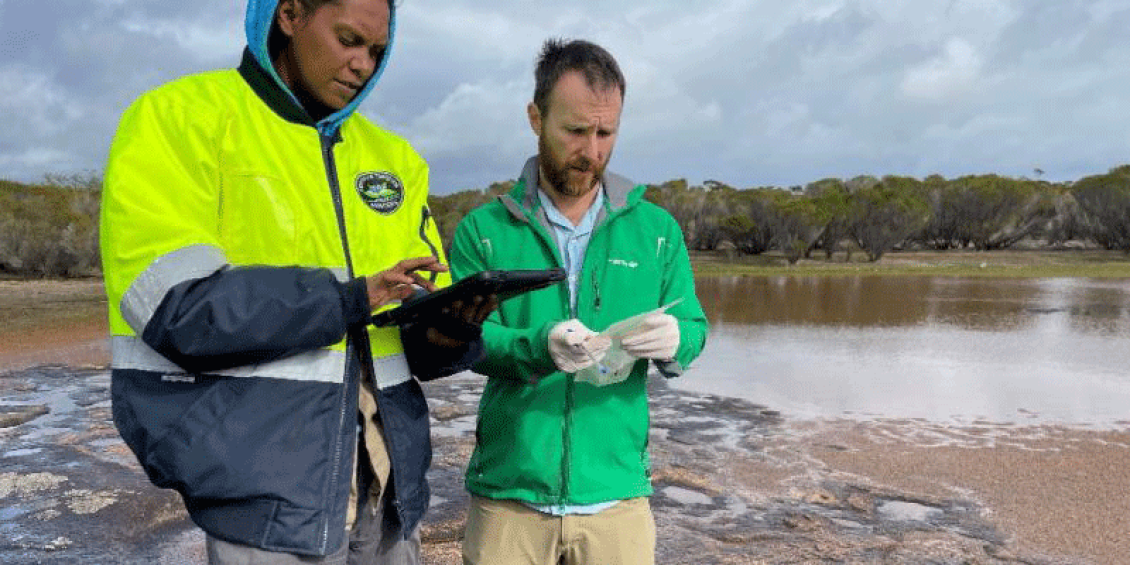Two-way Cultural Knowledge Systems and new eDNA techniques a success
Two-way Cultural Knowledge Systems and new eDNA techniques a success
National Indigenous Australians Agency

Uncle Henry Dabb, Senior Cultural Advisor of Tjaltjraak Healthy Country Program (HCP), provides guidance and cultural leadership to the ranger team.
'Our ways are about reading the landscape - that’s our cultural science. This work is part of that - backing up our ways of Knowing Country', he explains.
In Greater Marbaleerup in Western Australia, the Tjaltjraak rangers launched an environmental DNA (eDNA) project that uses traces of DNA found in cultural waterholes to identify animal species.
Holistically this project supports the ongoing cultural mapping work of important landforms, heritage places, and associated plant and animal communities.
The Tjaltjraak ranger team care for Greater Marbaleerup, part of Wudjari Country. A vast cultural landscape of Mallee woodlands stretching from Mt Ridley to Mt Ney, an expansive coastline of estuaries, impressive headlands and coasts filled with flowering and Kowngkan scrub.
Throughout winter, rangers will be out on Country, traveling the vast distances to collect eDNA samples across remote stretches of Country.
The project applies new and emerging technology (Odonata and EnviroDNA) that supports the ranger’s ground-based surveys.
eDNA samples are easily collected and provide data on species including the endangered Malleefowl.
Out on Country, each morning the team go through toolbox and safety checks and site selection.
‘We collect our own samples; and the sampling design is based on our cultural places, as directed by our Senior Cultural Advisors,’ said Hayleigh Graham, Tjaltjraak HCP Team Leader.
The data provides insights into where threatened native species, as well as feral species are located on Country. Data also aids in targeted recovery and control methods.
‘This is a new type of survey for us – environmental DNA - but we have, completed some projects and our formal training,’ said Hayleigh.
Once in the field, experienced team members, Hayleigh and Trevor, mentor new rangers to upskill and work with them on the upskilling attainment of certificates in eDNA sampling methods.
Formal recognition of these skills are being co-developed with ranger partners, adding to a worldwide movement of Indigenous rangers leading scientific data collection and monitoring programs on their Country.
‘So, this is another tool to add to our tool kit!’ said Hayleigh.
As the eDNA samples are processed, the data will build a more complete picture of the unique biodiversity that call Marbaleerup home. As an example, the rangers can now add and compare new information to their own data set on the movement of the Malleefowl.
This culturally-guided eDNA project, is another layer, and yet another addition to the diverse tool kit of the members of the Tjaltjraak Healthy Land and Sea Program.






